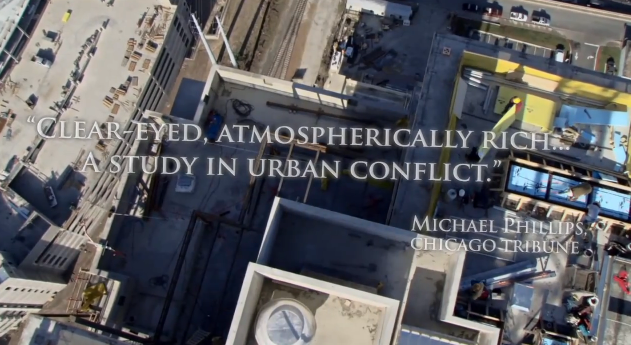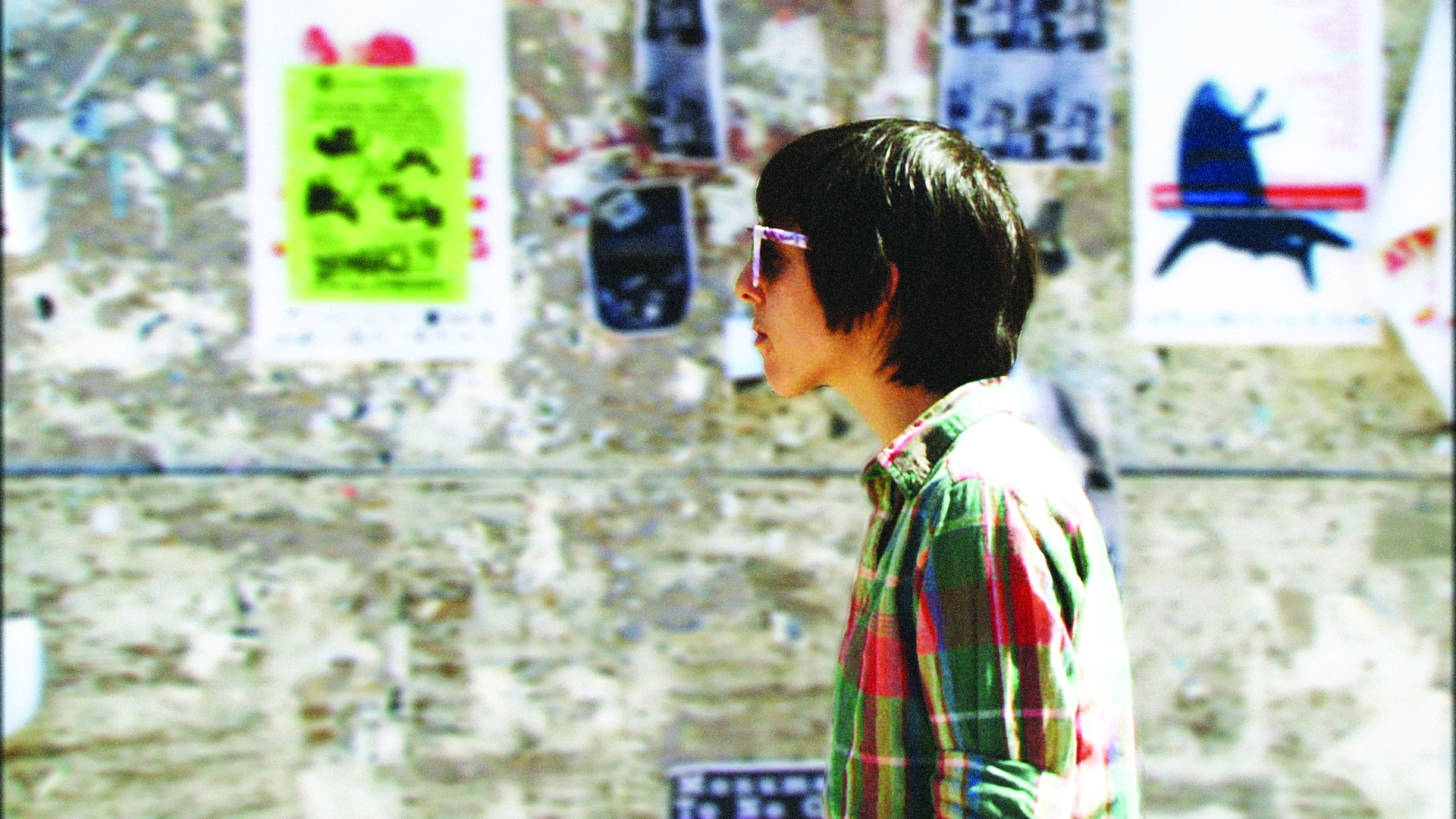
Image credit: Screenshot, Echotone trailer on YouTube
Hello, viz. readers! I’m Lisa, and I’m new to the blog. You’ll notice as you read my posts that I’ve got my favorite themes: cities and urban culture, genre-crossing productions (of the filmic and literary variety), and the global south.
My post today, on last year’s documentary film Echotone, concerns two of my three interests—I’ll leave it to you to figure out which of my interests apply.
The movie, made in 2010 by director Nathan Christ, is a self-described “cultural portrait of the modern American city examined through the lyrics and lens of its creative class.” Our fine blog’s hometown, Austin, Texas, is the American city under scrutiny in the film.
Throughout Echotone, the viewer is transported to staggering heights above the city. In fact, the opening shot pans across the skyline, documenting construction projects that dot the landscape of downtown Austin. Tethered to a crane, the camera sees the city in a panoptic—some might say voyeuristic, especially because of the evening/early morning light—way. With soft shadows and glimmering waters, there’s a beauty in seeing the city from above, removed from its day-to-day scuffles and scraps.

Image credit: Screenshot, Echotone trailer on YouTube
In truth, French theorist Michel de Certeau reminds us of this scopic pleasure in his famous chapter of The Practice of Everyday Life entitled “Walking in the City”: being atop the city’s highest structure and looking down at its beautiful totality transforms the mundane city into “a text that lies before one’s eyes. It allows one to read it, to be a solar Eye, looking down like a God.” When we can contain the totality of the city in one image, one visage, we are empowered.
So, then, why would we leave such great heights (for, of course, Echotone must move to documenting what happens in the streets, the bars, the garages of Austin to get to the heart of the city’s “creative class”)? Why, per de Certeau, should we “fall back into the dark space where crowds move back and forth”? Let’s follow de Certeau into the darkness: “The panorama-city is a ‘theoretical’ (that is, visual) simulacrum, in short a picture, whose condition of possibility is an oblivion and a misunderstanding of practices.” No overhead view of the city will show us its stories, its intricacies, its residents. So, we descend the heights (as we do in all movies about cities) into the murky streets and alleyways of the complex city.

Image credit: Screenshot, Echotone trailer on YouTube
And we do so with Echotone—we see a kitchen full of mattresses while an indie pop band records an album, we see a garage full of unsold CDs while the film’s producer explains why he promotes bands (it’s for the love of music), and we see a street full of tired and wired music-lovers during the city’s annual South by Southwest music festival. We see all these things in Echotone because a movie about a city can never be filmed only from on high.
The question is, why does Echotone switch between panoptic and street-level views as the movie progresses? We see everything on the ground through the “lens of [the city’s] creative class,” along with panning shots of the city from above, because Echotone is a tricky kind of movie. Part documentary, part moralizing tale about the problems that musicians face in the self-proclaimed “Live Music Capital of the World,” the film moves between the panoptic view of the city’s developers and the familiar views of its hardworking musicians. Like de Certeau’s pedestrian in the city that moves such that no panoptic power can know exactly what they’re doing at any given moment, the film strives to shake up our notions of the idyllic “music capital” by disorienting us with hypnotic sequences of the city from above. Of course, we know from the emotional value invested in the scenes with Austin bands (like Belaire who worry about “selling out,” like Sunset who worry about selling out again, and like Black Joe Lewis & The Honeybears who worry about being “broke”) where the true loyalties of the film lie—in the streets with Austin’s musicians.
To see the city of Austin in a movie theater near you through both panoptic and street-level lenses, visit Echotone’s “Events” page.
Recent comments
2 years 29 weeks ago
2 years 44 weeks ago
2 years 44 weeks ago
2 years 50 weeks ago
3 years 4 weeks ago
3 years 4 weeks ago
3 years 4 weeks ago
3 years 6 weeks ago
3 years 6 weeks ago
3 years 6 weeks ago